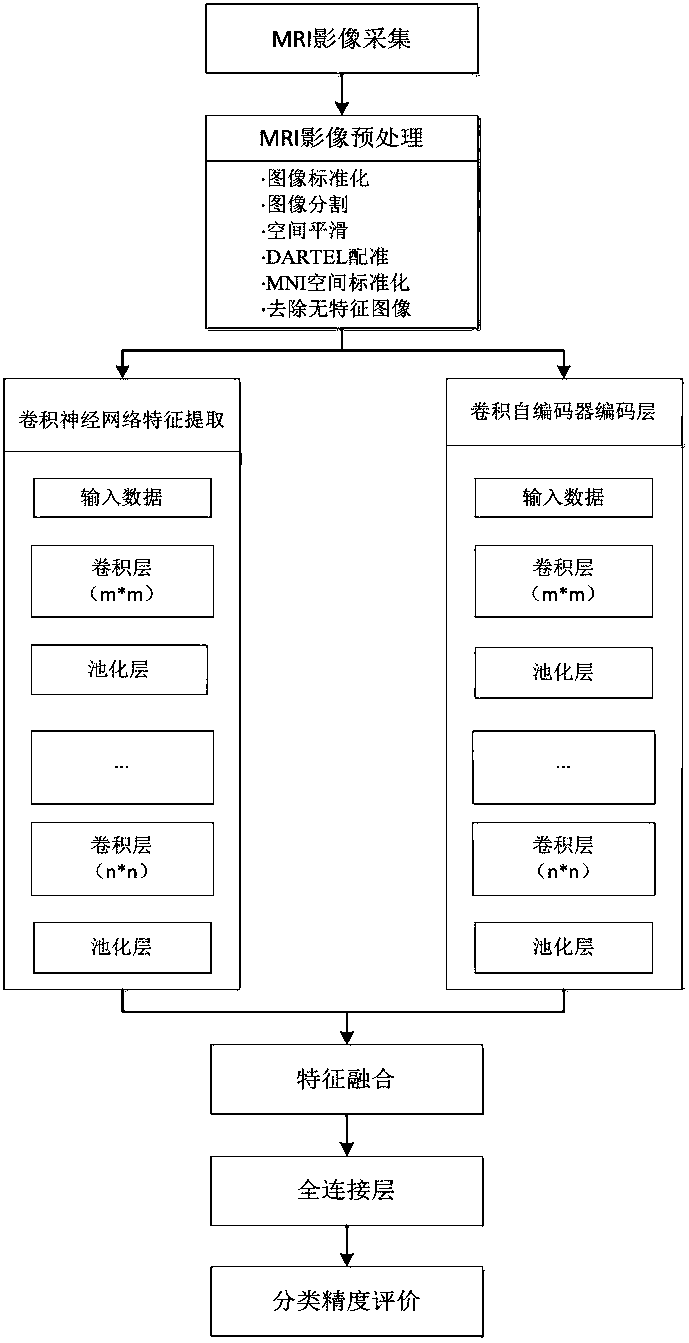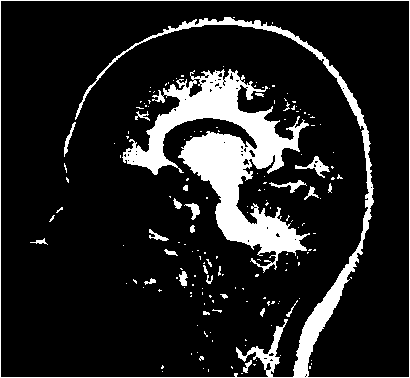SMRI image classification method and device based on multi-input convolutional neural network
A technology of convolutional neural network and classification method, which is applied in the field of image processing and artificial intelligence, can solve the problems of high-frequency information loss of sMRI images, low classification accuracy of sMRI images, and slow model training speed, etc. High, enhance the generalization ability, improve the effect of recognition rate
- Summary
- Abstract
- Description
- Claims
- Application Information
AI Technical Summary
Problems solved by technology
Method used
Image
Examples
Embodiment
[0058] Embodiment: schizophrenia sMRI image classification method device based on convolutional neural network (flow chart as shown in figure 1 shown), including the following steps:
[0059] The magnetic resonance scanner is used to collect magnetic resonance T1 image data to obtain sMRI images;
[0060] Preprocessing the obtained sMRI image data to obtain a three-dimensional gray matter density image without smoothing and a three-dimensional gray matter density image after spatial smoothing; this embodiment specifically includes:
[0061] Step 1. Perform affine transformation on all original sMRI images to be analyzed, and then perform local nonlinear transformation correction to obtain spatially standardized brain images;
[0062] Step 2, by using the prior probability distribution of the brain tissue and the gray value of the image to compare the brain structure, the spatially standardized brain image is segmented into a gray matter density image, and a gray matter densi...
PUM
 Login to View More
Login to View More Abstract
Description
Claims
Application Information
 Login to View More
Login to View More - R&D
- Intellectual Property
- Life Sciences
- Materials
- Tech Scout
- Unparalleled Data Quality
- Higher Quality Content
- 60% Fewer Hallucinations
Browse by: Latest US Patents, China's latest patents, Technical Efficacy Thesaurus, Application Domain, Technology Topic, Popular Technical Reports.
© 2025 PatSnap. All rights reserved.Legal|Privacy policy|Modern Slavery Act Transparency Statement|Sitemap|About US| Contact US: help@patsnap.com



